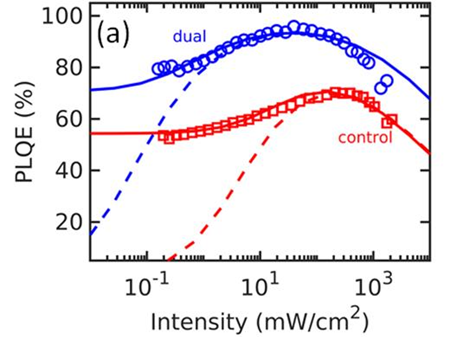


Perovskite-based optoelectronic devices like solar cells and light emitting diodes are making rapid strides towards commericalization, and NCPRE has a major program in perovskite-silicon tandem solar cells. Carrier recombination is a fundamental process that dictates the efficiency of such devices. For optimal efficiency, it is crucial to minimize trap assisted non-radiative recombination. At a material/thin- film level, carrier lifetimes are often back extracted through photoluminescence measurements. However, the parameters estimated using the existing numerial schemes do not anticipate the steady state performance of solar cells and LEDs. Further, at large carrier densities, the efficiency of photoluminescence decreases – the physical origin and implications of the same is important for optoelectronics. Prof. P. R. Nair’s group recently elucidated physics based self-consistent strategies to unambigously back extract the recombination parameters from PL transients. Their results also indicate the presence of positive feedback mechanism between sample heating and radiative recombination which leads to PL efficiency roll-off in Perovskites. These insights are helpful towards the thermal design of solar cells. The details are published in the papers titled “Near ideal photoluminescence in Perosvkites – Excitonic effects and self-consistent back extraction of recombination parameters.” Journal of Applied Physics, 137, 083104 (2025) and “Photoluminescence efficiency droop in Perovskites.” ACS Photonics, (accepted, 2025).

Photoluminescence Quantum Efficiency (PLQE) of Perovskites. The model estimates of recombination parameters from transient measurements. The same predicts the steady state intensity dependent PLQE of perovskites (from JAP, 137, 083104, 2025).